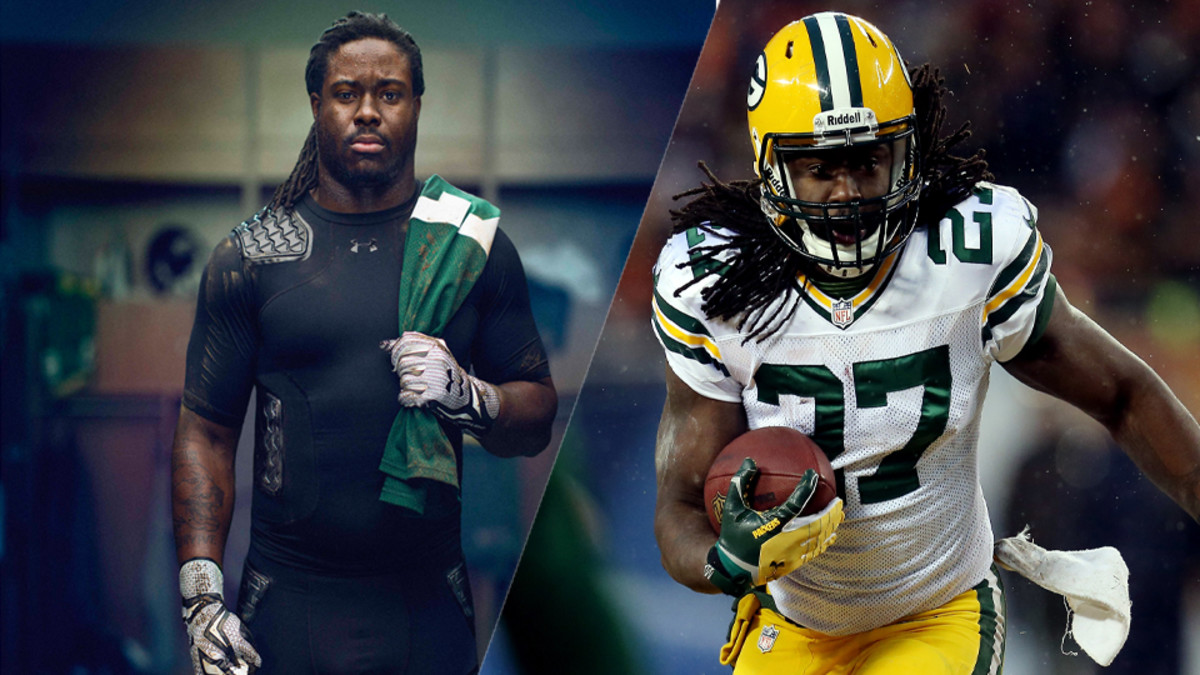
Tech Talk: Under Armour introduces smart material in football protection
As NFL training camps get underway and teams begin to determine who will stay and who will go, Under Armour is debuting a new protection baselayer that will actively disperse the impact of hits in “traditional target contact zones.”
Created in conjunction with UK-based smart materials company D30, this new protective polymer in the Gamdeday Armour Max product reacts to impact in a way traditional foams can’t, engineering in a protection component that changes its properties during competition.
How does it work?
The best way to describe the new material, Neal Goldman, director of men’s training apparel and team sports for Under Armour, tells SI.com is by saying the new baselayer has “an active ingredient.”
“It is a protective layer that is constantly adapting and moving to whatever type of impact situation an athlete gets them into,” says Goldman.
The D3O material takes a smart polymer that has molecules that tighten during impact, “locking up and dispersing load away from the body.” Once that initial shock gets dissipated, the molecules return to its normal state of pliability.
What is this stuff?
Goldman calls the polymer “silly putty in your hand.” Soft and malleable, the material stretches out and gets stringy, but when impacted it tightens up so much you could cut it with a knife and have clean edges.
Adidas' soccer overhaul includes signature boot for Lionel Messi, more
“The molecules are acting and reacting to whatever is happening to the actual polymer,” Goldman says. “That truly is the method of the madness. It is something that can interpret what is happening in the environment and is unique in the sports category.”
The change in property happens in split seconds, too quick for the naked eye, moving energy laterally and returning to its normal state just as quickly.
How is it being used in sports?
Under Armour is starting by adding the ingredient inside baselayers designed for football. Where you’d usually find EVA foam in a football protection piece, Goldman inserted the new polymer. For a shirt, the material falls in the rib and shoulder areas and in the thigh, hip and tailbone for the girdle, all the “traditional target contact zones.”
Goldman says because the new polymer gives better protection than foam in a thinner version—five millimeters on the hips and shirt and 6 millimeters on the thigh—UA used compression material that has four-way stretch and heat-management, the best of the company’s baselayer fabrics, Goldman says.
One of the thinnest layers of padding ever introduced by Under Armour also comes with a removable hard-shell plate athletes can add for an extra layer of protection.
What’s next?
“We wanted to debut it in football, in a sport where safety is becoming such a prominent issue,” Goldman says. “We will take what this technology is and turn it into other uses.”
Expect to see the D3O product soon for everything from basketball and ice hockey to baseball and soccer, both for impact protection and abrasion protection, the latter will especially ring true for soccer and baseball.
Goldman says the thin, flexible layer that moves with a body in motion will allow Under Armour to easily transfer the technology across multiple sports, creating actively smart protection along the way.
Tim Newcomb covers stadiums, design and gear for Sports Illustrated. Follow him on Twitter at @tdnewcomb.





